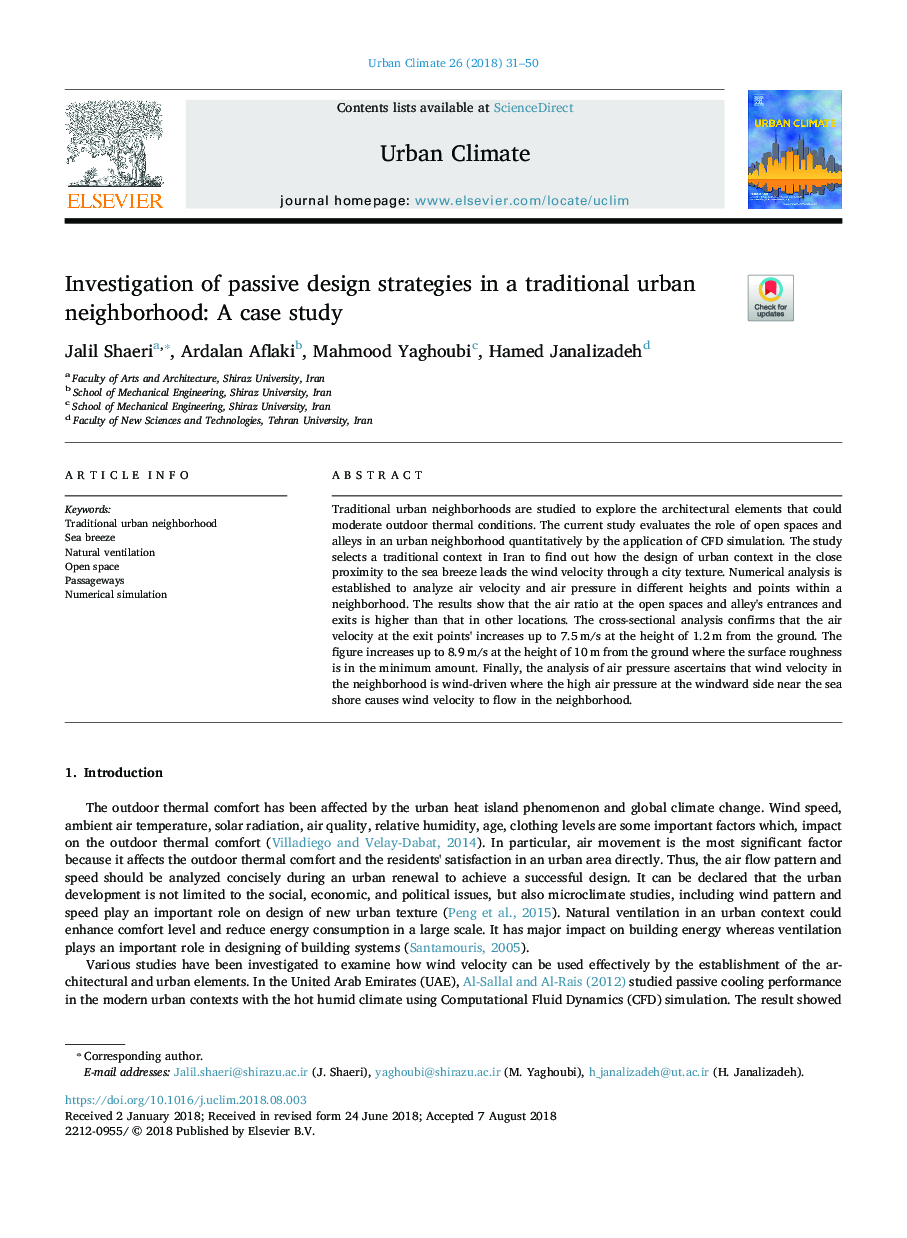| Article ID | Journal | Published Year | Pages | File Type |
|---|---|---|---|---|
| 9951770 | Urban Climate | 2018 | 20 Pages |
Abstract
Traditional urban neighborhoods are studied to explore the architectural elements that could moderate outdoor thermal conditions. The current study evaluates the role of open spaces and alleys in an urban neighborhood quantitatively by the application of CFD simulation. The study selects a traditional context in Iran to find out how the design of urban context in the close proximity to the sea breeze leads the wind velocity through a city texture. Numerical analysis is established to analyze air velocity and air pressure in different heights and points within a neighborhood. The results show that the air ratio at the open spaces and alley's entrances and exits is higher than that in other locations. The cross-sectional analysis confirms that the air velocity at the exit points' increases up to 7.5â¯m/s at the height of 1.2â¯m from the ground. The figure increases up to 8.9â¯m/s at the height of 10â¯m from the ground where the surface roughness is in the minimum amount. Finally, the analysis of air pressure ascertains that wind velocity in the neighborhood is wind-driven where the high air pressure at the windward side near the sea shore causes wind velocity to flow in the neighborhood.
Related Topics
Physical Sciences and Engineering
Earth and Planetary Sciences
Earth and Planetary Sciences (General)
Authors
Jalil Shaeri, Ardalan Aflaki, Mahmood Yaghoubi, Hamed Janalizadeh,
